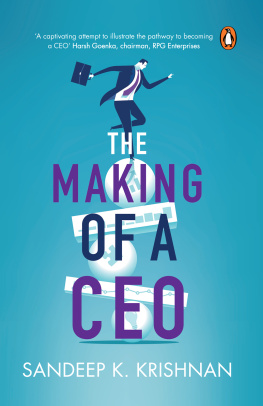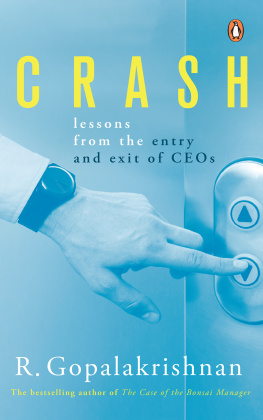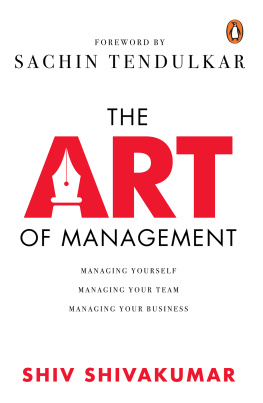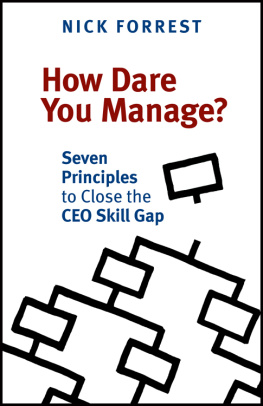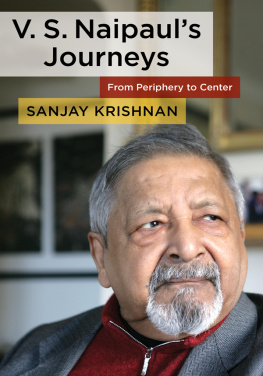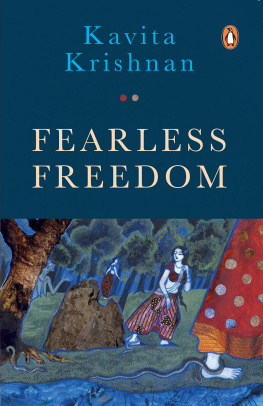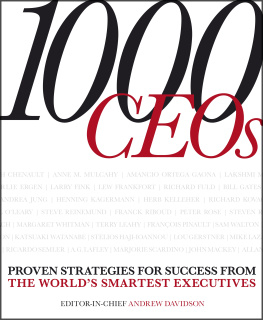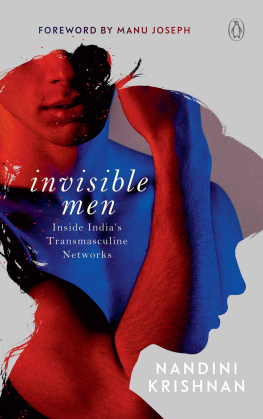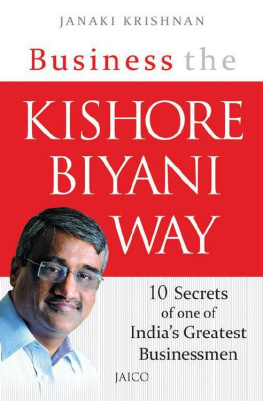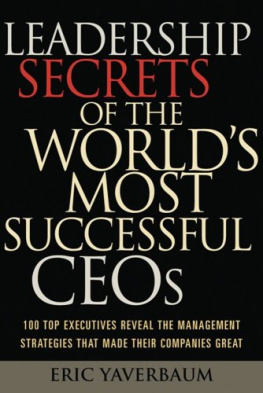Sandeep K. Krishnan is a senior director at People Business, a global leadership and human resources consulting firm. He is an adjunct professor for the course The Making of a CEO at IIM Bangalore. He is also a visiting faculty at IIM Indore.
Sandeep is a fellow (doctorate) of IIM Ahmedabad and did his graduation from the College of Engineering, Thiruvananthapuram. At People Business, Sandeep has led consulting assignments with organizations like 3M, Tata Group, ITC Limited, Biocon, Britannia, Manipal Group, Allstate, United Technologies, PWC and Accenture in the areas of leadership and talent management. Prior to joining People Business, he has worked with Infosys, Ernst and Young, IBM and RPG Group. He is an executive coach with certification from the University of Cambridge.
Praise for the Book
Sandeep Krishnan illustrates, through his narrative, the pathway to success. From start-ups to family businesses to NGOsthe book traverses the journey of a CEO in different contexts. Backed by research and insightful interviews of business leaders, this book gives an interesting, fresh perspectiveHarsh Goenka, chairman, RPG Enterprises
A CEOs job looks glamorous from the outside. However, it is lonely at the top. Its a job where you depend more on the strengths of others than your own abilities. This book chronicles the journeys of various CEOs. Read it to become a CEO and also to appreciate your CEO as he/she is the least appreciated person in an organizationD. Shivakumar, chairman and CEO, PepsiCo India
Is it skills, integrity, relationship management, family background, keeping an ear to the ground... what is it that makes a good CEO? This book goes a long way to help us understand this by blending real-life examples with insights from researchProf. Errol D Souza, director-in-charge, IIM Ahmedabad
The Making of a CEO by Sandeep Krishnan is a delightful exposition of the insights garnered from the life and work of several celebrated CEOs, from various sectors and fields of organized activity. I am sure this book will make a significant contribution to the sculpting of future leaders for the corporate sector as well as for the community at largeProf. Mathew Manimala, director, XIME, and former professor, IIM Bangalore
Sandeep paints a vivid description of the role of a CEO in multiple contextsstart-ups, established companies, the public sector, educational institutes, family businesses and social organizations. He is able to bring out the nuances of the role across these diverse environments and provide valuable suggestions for professionals who aspire to be successful CEOsG.V. Ravi Shankar, managing director, Sequoia Capital India
To
my wife, Dr Dhanya Sandeep,
and daughters, Isha and Aekta.
With heartfelt gratitude to my parents,
Professor K. Kunhikrishnan and
Syamala T.C., and brother,
Dr Sudeep K. Krishnan
Im responsible for this company. I stand behind the results. I know the details, and I think the CEO has to be the moral leader of the company... I think high standards are good, but lets not be confused, its about performance with integrity. Thats what you have to do.
Jeffrey Immelt, chairman and former CEO, General Electric
Introduction
The chief executive officer (CEO) epitomizes the organization. The organizations existence and its future are defined by the role the CEO plays. The CEO is the ultimate decision maker and can often be defined as a combination of a chief operations, marketing, finance, people and communications officer apart from the other key roles. The success or failure of the organization is often directly attributed to the CEO. At one level, the CEO is also the chief decision officer.
Great CEOs leave their footprints behind. They have the ability to transform businesses and even change the way society operates. Bill Gates changed the way the world works with Microsoft. Steve Jobs changed the way the world designs gadgets with Apple. N.R. Narayana Murthy of Infosys paved the way and showed how corporations can share their wealth with employees in India. Dhirubhai Ambani, founder of Reliance, showed how an entrepreneur can start from scratch to create an empire. Larry Page and Sergey Brin, co-founders of Google, changed the way the world searches for information. It is amply clear that every CEO has a unique opportunity to leave behind an enduring legacy.
In this book, the word CEO is sometimes used synonymously with positions such as managing director and chairman if the incumbent is also, in many ways, handling the operating role of running the company. Research shows that the role of a CEO is becoming more significant and often has a more direct impact on the companys performance. With the environment of organizations becoming more dynamic and competitive, it is the top managements strategy led by the CEO that can steer the company towards sustained growth. A CEO also shapes the culture of the organizationeither sustaining or changing it. An interesting example of this would be of the ex-chairman of IBM, Louis V. Gerstner, who is credited for its turnaround. Gerstner revived the ailing IBM by pulling the levers of its culture, changing the attitude towards teamwork, providing solution to the customers, integrating different business units, changing the measurement of results, and improving communication with external and internal stakeholders. In the end, it is a well-known fact that Gerstner got IBM to dance!
There are leaders in corporates, NGOs, government and public sectors who have made a tremendous impact. There are great examples of public servants heading government enterprises and making a lasting impact on society. In India, E. Sreedharan illustrated how a government servant can influence society by high levels of effectiveness. He is credited with the successful execution of key projects that helped the Indian public. This includes the Konkan Railway, a 741-kilometre line that connected Mumbai to Mangaluru. As per Wikipedia, With a total number of over 2,000 bridges and 91 tunnels to be built through this mountainous terrain containing many rivers, it was the biggest and perhaps the most difficult railway engineering project in the Indian subcontinent at the time. He was then entrusted with another key project: to develop the metro lines for urban transport in the National Capital Region (NCR), called the Delhi Metro. The success of the project gave E. Sreedharan a new name: Metro Man. The ability to lead and make a difference in the society has made E. Sreedharan one of the most successful CEOs that India has seen in the recent past.
Verghese Kurien, known as the Father of the White Revolution, made a tremendous mark on the cooperative movement in the country. He is credited with establishing Amul and the National Dairy Development Board (NDDB). Kurien was able to bring dairy farmers into the fold, changing the dairy supply chain of the country. His ability to organize the cooperative movement, first in Gujarat through Amul and then later to replicate the experiment across the country through NDDB, points to a leader who could articulate a vision and execute it to make a large-scale institution.

